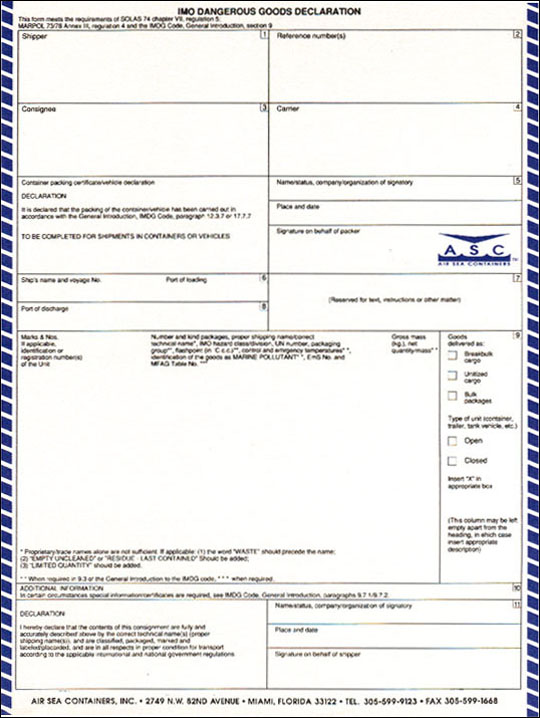|
|
Select a destination country above to begin calculating affordable international shipping costs for freight from the United States.
Shipping dangerous goods from the USA overseas
Dangerous Goods (DG) refers to items classified as hazardous when shipping cargo from the USA to other countries.
Dangerous goods refer to materials that can pose risks during transportation. These goods are divided into classes 1 to 9, based on their hazards. Most ocean freight companies only ship restricted items classified as classes 3, 8, and 9. If you need to ship goods from other classes, find a carrier that specializes in transporting dangerous goods.
Shipping dangerous goods from the USA has strict rules and requires approval before you can book a shipment. Additionally, you will likely face extra fees for shipping dangerous goods, which can be high and typically include a minimum charge for each shipment.
The DG surcharge is not included in the international price quotes received through our online freight calculator.
When quoting an international shipment using our online freight calculator, select the Dangerous Goods (DG) option. You must provide a Dangerous Goods Declaration (IMO), wait for the ocean freight carrier to approve it, and be informed of surcharges.
We advise against shipping restricted items unless you are a professional in dangerous goods (DG) shipping. For example, remove the battery when sending an electric lawnmower.
If you need to ship such cargo, prepare your IMO Dangerous Goods Declaration beforehand. The International Maritime Organization (IMO) requires this document; without it, carriers cannot approve your Dangerous Goods (DG) shipment. You can submit a draft of your IMO for pre-approval, but it should not include sailing details. The signed IMO must be attached to the DG cargo before shipping.
A Dangerous Goods Declaration certifies that hazardous goods transported from the United States are packed, labeled, and declared under international cargo transportation standards. Sample DG declaration forms for international shipping from the USA are available online.

Shippers must provide declarations for shipments from the USA and identify whether their sea freight contains hazardous materials. If any part of the shipment contains restricted items, the entire shipment is considered hazardous unless that part is booked separately.
Shippers must identify, classify, pack, mark, label, and complete all necessary documentation for shipping international dangerous goods. Failure to follow these rules can create hazardous situations on the cargo ship and may result in fines or even criminal charges.
Before shipping, determine if your cargo includes regulated cargo. This includes items like aerosol sprays, airbags, ammunition, butane, car batteries, cologne, dry ice, fireworks, gasoline, jet fuel, lighters, lithium batteries, matches, nail polish, nail polish remover, liquid nitrogen, paint, perfume, solvents, and certain chemicals.
If you are unsure if your shipment has hazardous materials or need help identifying and classifying them, contact the US Department of Transportation at 1-800-467-4922. You can also check with the manufacturer of your goods for assistance.
Remember that most international sea freight carriers will not accept dangerous goods for shipping from the USA unless they fall under IMO Classes 3, 8, and 9. Transporting hazardous materials not in these classes requires a carrier with special equipment.
Segregation of DG / Hold Harmless Letter
Some dangerous goods cannot be mixed with other substances. They may react with other hazardous materials, chemicals, or safe items like dust, air, or water. Hazardous items can come into contact with incompatible substances due to spills or leaks, potentially releasing toxic gases and leading to fires or explosions.
It is a legal requirement to ship hazardous goods from the US that are found to be incompatible with other substances and must be stored and handled separately. This helps prevent incidents from spills or unwanted reactions. You can achieve this by using a waterproof barrier or keeping a safe distance between items.
If an ocean freight carrier needs to separate dangerous goods during international shipping, the sender must provide a HOLD HARMLESS LETTER on their letterhead.
This letter must clearly state that the chosen sea freight carriers and anyone involved in the segregation are not responsible for any damage or loss of cargo during the segregation.
- The letter should also include clear instructions on what needs to be separated.
- The international shipper is guaranteed to pay the global sea freight carrier segregation charges.


.png)


